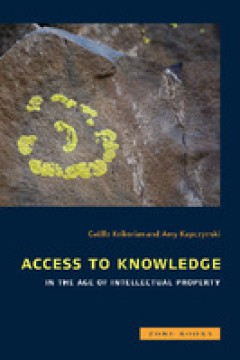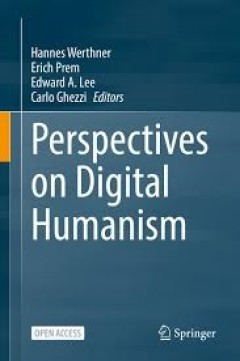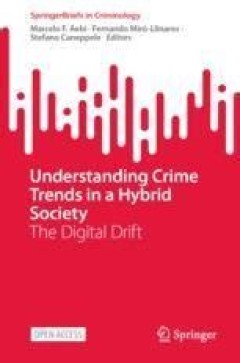Filter by

After the "Socialist Spring" ; Collectivisation and Economic Transformation i…
Drawing on a broad range of archival material from state and SED party sources as well as Stasi files and individual farm records along with some oral history interviews, this book provides a thorough investigation of the transformation of the rural sector from a range of perspectives. Focusing on the region of Bezirk Erfurt, the author examines on the one hand how East Germans responded to the…
- Edition
- -
- ISBN/ISSN
- 9781789201086
- Collation
- -
- Series Title
- -
- Call Number
- -

AfroAsian Encounters
With a Foreword by Vijay Prashad and an Afterword by Gary Okihiro How might we understand yellowface performances by African Americans in 1930s swing adaptations of Gilbert and Sullivan's The Mikado, Paul Robeson's support of Asian and Asian American struggles, or the absorption of hip hop by Asian American youth culture? AfroAsian Encounters is the first anthology to look at the mutual influen…
- Edition
- -
- ISBN/ISSN
- 9780814769270
- Collation
- -
- Series Title
- -
- Call Number
- -

Afrikaners and the boundaries of faith in post-apartheid South Africa
This book examines the shifting moral and spiritual lives of white Afrikaners in South Africa after apartheid. The end of South Africa’s apartheid system of racial and spatial segregation sparked wide-reaching social change as social, cultural, spatial and racial boundaries were transgressed and transformed. This book investigates how Afrikaners have mediated the country’s shifting boundari…
- Edition
- -
- ISBN/ISSN
- 9781003185574
- Collation
- 195
- Series Title
- Routledge Contemporary South Africa
- Call Number
- -

Access to Knowledge in the Age of Intellectual Property
A movement emerges to challenge the tightening of intellectual property law around the world.At the end of the twentieth century, intellectual property rights collided with everyday life. Expansive copyright laws and digital rights management technologies sought to shut down new forms of copying and remixing made possible by the Internet. International laws expanding patent rights threatened th…
- Edition
- -
- ISBN/ISSN
- 9781890951979
- Collation
- oer.unej.ac.id
- Series Title
- -
- Call Number
- -

Access Denied
A study of Internet blocking and filtering around the world: analyses by leading researchers and survey results that document filtering practices in dozens of countries. Many countries around the world block or filter Internet content, denying access to information that they deem too sensitive for ordinary citizens—most often about politics, but sometimes relating to sexuality, culture, or re…
- Edition
- -
- ISBN/ISSN
- 9780262042451
- Collation
- oer.unej.ac.id
- Series Title
- Information Revolution and Global Politics,
- Call Number
- Regional,

“The Sting of Death” and Other Stories
Society and social sciences;Modern and contemporary fiction (post c 1945)
- Edition
- -
- ISBN/ISSN
- -
- Collation
- -
- Series Title
- -
- Call Number
- -

A Common Hunger : Land Rights in Canada and South Africa
Geographically, demographically, and politically, South Africa and Canada are two countries that are very far apart. What they have in common are indigenous populations, which, because of their historical and ongoing experience of colonization and dispossession, share a hunger for land and human dignity. Based on extensive research carried out in both countries, A Common Hunger is a comparative…
- Edition
- -
- ISBN/ISSN
- 9781552385739
- Collation
- 284 hlm
- Series Title
- -
- Call Number
- -

“At This Defining Moment: Barack Obama’s Presidential Candidacy and the N…
In January 2009, Barack Obama became the 44th president of the United States. In the weeks and months following the election, as in those that preceded it, countless social observers from across the ideological spectrum commented upon the cultural, social and political significance of “the Obama phenomenon.” In “At this Defining Moment,” Enid Logan provides a nuanced analysis framed by …
- Edition
- -
- ISBN/ISSN
- 9780814753460
- Collation
- -
- Series Title
- -
- Call Number
- -

Perspectives on Digital Humanism
- Edition
- -
- ISBN/ISSN
- 978-3-030-86144-5
- Collation
- -
- Series Title
- -
- Call Number
- -
- Edition
- -
- ISBN/ISSN
- 978-3-030-86144-5
- Collation
- -
- Series Title
- -
- Call Number
- -

Understanding Crime Trends in a Hybrid Society = The Digital Drift
This open access book critically revisits 30 years of debate surrounding the evolution of crime trends, aiming to reconcile various hypotheses and controversies. It scrutinizes the concept of the "crime drop," highlighting the methodological pitfalls in understanding the causation mechanisms behind this phenomenon. By examining the impact of information and communication technologies (ICT) on d…
- Edition
- -
- ISBN/ISSN
- 9783031723872
- Collation
- XV, 131 hlm; ill., lamp.,
- Series Title
- -
- Call Number
- -
 Computer Science, Information & General Works
Computer Science, Information & General Works  Philosophy & Psychology
Philosophy & Psychology  Religion
Religion  Social Sciences
Social Sciences  Language
Language  Pure Science
Pure Science  Applied Sciences
Applied Sciences  Art & Recreation
Art & Recreation  Literature
Literature  History & Geography
History & Geography